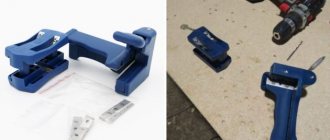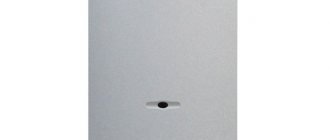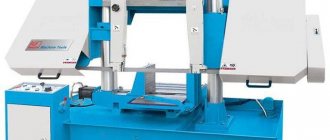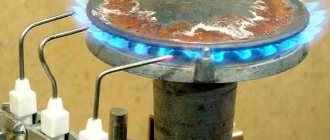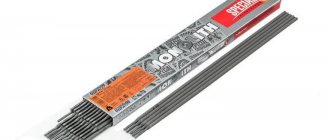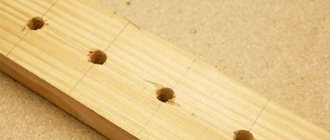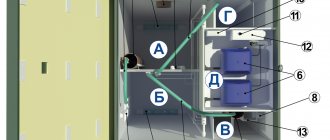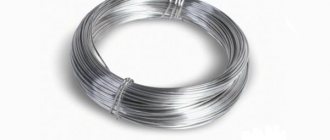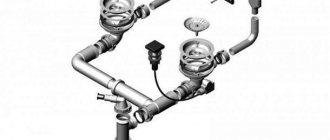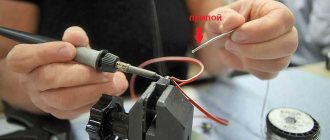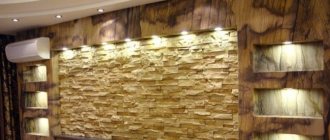Materials for production
Staples for furniture staplers are made from various types of metals. This allows you to select a material with the most suitable properties. There are several main types of metal:
- aluminum is the cheapest material with low rigidity. On a solid frame and when there is a heavy load on the joint, fasteners made of this metal are not used, as they bend and break. But aluminum is resistant to corrosion, which is one of its advantages;
- copper is a soft but corrosion-resistant expensive metal;
- steel - two types of fasteners are produced: hardened and without hardening. The first is higher in strength, but more expensive. Both types are susceptible to corrosion;
- plain stainless steel or zinc-coated - such elements are highly durable and are considered the most popular type of staples.
The choice of metal for staples is carried out taking into account the place of their use and purpose. It is also worth paying attention to the budget allocated for repairs and the cost of materials.
Aluminum
Copper
Steel
Types and sizes
Each furniture stapler has its own type of staples. There are a large number of them and they all vary in size. The most commonly required staples are suitable for furniture staplers of type 53 and 140. They have the following parameters:
- 53 — back width 11.3 mm, thickness 0.7 mm, leg height (depth of entry into the material) from 4 to 14 mm;
- 140 - width 10.6 mm, thickness 1.25 mm (almost 2 times the previous one), height 6-14 mm.
Staples for furniture staplers can have the same dimensions but have different names. This is due to the characteristics of their manufacturer. Each type of fastener has its own parameters. They mean the following:
- width characterizes the strength of the material (for use on thin fabric, take wide ones, but when working with plywood, this size does not matter);
- thickness (length of the staple) is needed to assess the possibility of hiding the fastening, but not every stapler can work with a short staple, and this also reduces the fastening force);
- height (length of the leg) characterizes the thickness of the canvas on which the fastening is made, taking into account the depth of entry into it.
Knowing the parameters of furniture staples and their meaning is necessary for the correct selection of fasteners. Among furniture clips (this is another name for staples), there are differences in shape. It determines the type of fastener:
- U (legs pointing down) - especially popular in Canada and the USA at Christmas, it is used to mount home decorations. The depth of entry of the staple into the material is adjusted on the stapler, which allows you to avoid damaging the wiring. The most common type is made of aluminum with sharp ends;
- P - considered universal, made of various materials, used everywhere except for fastening wiring;
- T - a rare and expensive form, resembles nails, has low fastening force, so you should not use it in critical places. Capable of holding plywood, thin wood (lining), chipboard.
The choice of staple depends on the shape, parameters and model of the stapler, as well as the type of work performed. This needs to be taken into account before going to a hardware store.
U-shaped
U-shaped
T-shaped
U-shaped fastener parameters
Consumables in the shape of the letter “P” are characterized by three sizes:
- the length of the leg or the height of the bracket (denoted by the Latin letter H), which determines the maximum possible depth of immersion of the fastener into the surface of the base material;
- the width of the “back” (the length of the bracket itself, indicated on the marking as L or b), which is taken into account if it is necessary to mask the connection point;
- thickness (width, designated W or a), which determines the strength of fasteners made from different materials.
All dimensions on the markings are presented in millimeters. The photograph shows U-shaped and T-type fasteners with the letter designation of their individual parts.
It should be taken into account that the shorter the length of the bracket, the less load the fastening can withstand.
Of the entire significant range of U-shaped brackets, the following types are most in demand in practice:
- 53, having a staple thickness of 0.7 mm, a length of 11.3 mm and a stem height of 4 to 14 mm;
- 140, characterized by a significant degree of rigidity, with dimensions: H - 6÷14 mm, L - 10.6 mm, W - 1.25 mm.
Other existing types of U-shaped consumables by standard size are rarely used.
Types of U-shaped and T-shaped consumables
Arc-shaped fasteners are intended for special modifications of furniture staplers. There are only two types of such fasteners:
- 28 (otherwise denoted by the capital letter S), designed for securing a cable with a cross-section of 4.5 mm, having a clip thickness of 1.25 mm, and a leg height of 9÷11 mm;
- Z6 (L is also written in the marking) is a semicircular fastener with a thickness of 1.25 mm, a leg height of 6÷10 mm, used when fastening a wire with a diameter of 6 mm.
Nuances of choice
A staple for a furniture stapler may have sharpened legs. They fit into the base more easily, and the power on the device is set lower than usual. This saves energy consumption and increases the service life of the automatic stapler. If a hand-held device is used, less effort is required to secure it. This allows you to work longer and get less tired.
Before going to a hardware store, you need to think about what staples are best for use in a furniture stapler given the situation that arises during the renovation. If high humidity is often maintained in the room (bath, sauna, bathroom, balcony), then the choice should fall on corrosion-resistant metals. These include copper, aluminum and stainless steel. This will avoid rusty stains on the materials and also prevent the destruction of the structure.
If it is known that the load on the fasteners is designed to be small, it is advisable to install them from aluminum. This choice is especially good for vapor barriers and wiring. In this case, you need to take into account the level of hardness of the base material, because aluminum is quite soft and may not fit into it.
For fastening lining or other hard and massive materials, it is better to choose stainless steel clips. They will be able to support the weight of the structure and are not subject to destruction from water. If in such a situation you install aluminum fasteners, the wood will absorb water and bend the holding elements. The structure will become fragile and may collapse.
The staples are packaged in boxes of various sizes. They come in 500, 1t, 2t, 3t, 5t pieces per package. The staples are fastened together with an adhesive compound into blocks of several pieces. This is necessary for ease of filling the stapler. The length of the block does not always correspond to that of the device, but the paper clips are easily separated from each other, allowing you to adjust the size.
When choosing staples, you need to take into account not only the approximate quantity required for repairs, but also the percentage of possible defects. If the master working with the stapler is inexperienced, and the staples are fragile or soft, you should take at least 50% of the expected number in reserve.
The price of paper clips ranges from 30 rubles. up to 212 rub. of the same type (53), but from different companies. Inexpensive fasteners are produced by Saturn, and the most expensive ones are produced by Bosh. The cost depends on the material used. The higher it is, the stronger the metal. This means a lower percentage of defects and ease of use. Therefore, sometimes it is better to choose more expensive, but high-quality fasteners, and spend less time and effort on the work.
Stainless steel staples are expensive, but at the same time they successfully combine corrosion resistance and strength. This material is especially relevant in rooms where reliable fastening is required, but high humidity is maintained (bathrooms, baths, saunas). These paper clips are produced only by large companies that are ready to be responsible for the quality of their products and their considerable price.
Fasteners made of copper are stronger than those made of aluminum; they are also non-fragile and resistant to water. They are often used in decorative structures due to their color and properties. But copper staples are expensive, so their use is not as widespread as aluminum ones.
When choosing steel fasteners, production technology is taken into account. Hardened products are more durable, but their cost is higher. They are chosen for hard surfaces that softer metals can bend on. They easily fit into the main fabric, but under lateral load the fasteners cannot withstand and break in half.
When choosing paper clips, not only the type of room in which the work will take place is taken into account, but also the materials used. If it is necessary to secure the back surface of a cabinet made of hardboard or plywood, use simple steel fasteners. It is better to choose galvanized ones to avoid corrosion, but regular ones will do. In chipboard, staples are easily fixed, but do not hold well. Therefore, it is better not to move furniture assembled in this way or subject it to heavy loads. Since the thickness of the chipboard is considerable, high staples are needed, with a long leg.
To work with upholstered furniture or upholstery of chairs, you need to choose paper clips with a large width and sharp legs. Stainless steel and copper are good materials. The large-width staples fit neatly into the fabric without disturbing its integrity, and the pointed legs can be easily inserted into any material, including wood.
Types of staplers
Devices that perform the functions of fastening sheet materials are usually divided into construction, furniture and office. However, the difference between the first two is only symbolic. Therefore, the classification can be taken as follows:
- Device for office needs.
- Construction stapler (tacker).
- Special device for baguettes, corrugated cardboard boxes, etc.
A stationery stapler not only pierces sheets, but also bends staples from the inside. This is the only difference in the operating principle. Therefore, it makes sense to get acquainted with the device using a construction sample as an example.
Instructions for use
To understand why a furniture stapler bends staples, you need to check whether they are inserted correctly, and also compare the material of the base and the staple. The required fastener characteristics are indicated on the tool label. You need to study it carefully and choose exactly the brackets that are indicated.
If you have taken the necessary staples, but the furniture stapler does not hammer in the staples, there may be several reasons:
- tool malfunction;
- discrepancy between the selected metal and the hardness of the base;
- blunt ends of the staple if there is an obstacle to its entry into the material;
- incorrectly threaded stapler;
- unadjusted instrument.
Before work, you need to make sure that this type of paper clip is suitable in shape and size for the stapler. If these parameters do not match, the tool will not work. The exact description of the required consumables is indicated on the box for the stapler or on a sticker located on the body of the tool.
How to insert staples into each specific stapler is indicated in its instructions. Usually they are located with sharp edges down on a special holder with a spring. It is filled all the way so that the stapler lasts a long time. The exact number of paper clips is indicated in the instructions. It is in the box with the stapler.
If the tool is mechanical, then it needs to adjust the screw regulator (if equipped). The greater the depth of the staple, the tighter the handle should be tightened. Sizes from 10 mm are taken into account.
The adjustment is checked on an inconspicuous place or unnecessary material, identical in properties to the base. The adjustment is carried out gradually, from the minimum position to the maximum. Adjustment is carried out until the bracket enters the base with one blow. Once the tool is set up, it can be used directly on the part.
In order not to make a mistake in the distance from one bracket to another, mark it with a pencil. Some staplers have a lock that allows you to set the desired length between the staples without basting. It is better to insert the staples not parallel to the edge of the sheet, but with an inclination of 45°
To ensure that the edges of the product look neat and do not have to redo the work, the material is held while driving the staples. It is necessary to check after each row that the required number of paper clips is present. When upholstering upholstered furniture, the distance between the fasteners should not be too small to prevent damage to the fabric. It is best to insert paper clips into the fold of the material, which will extend the life of the product.
Safety precautions when working with a stapler require you to put the tool on safety after finishing the work or session. This will prevent injury and damage to the instrument. If you follow these simple rules, working with a stapler will not cause any inconvenience, but will allow you to quickly and easily carry out the necessary repairs.
Installing staples

